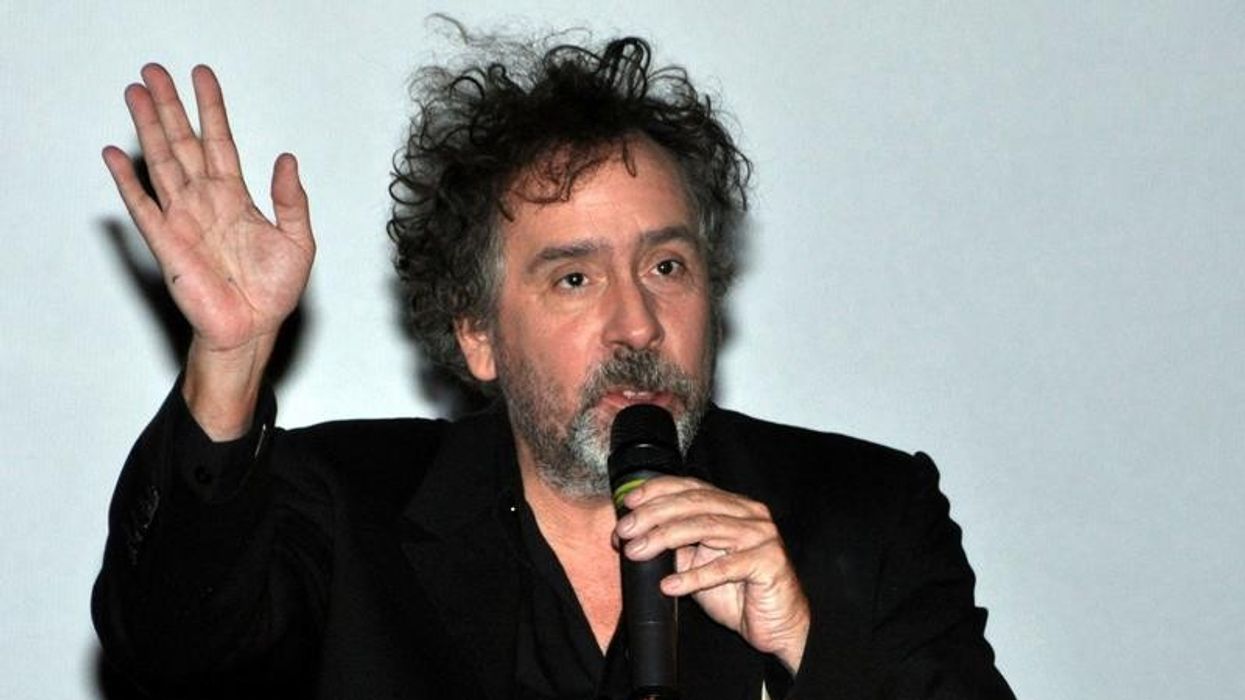Why the VFX Team of 'The Boys' Avoids Green Screen at All Costs
While blue and green screen compositing is one of the most important tools in visual effects, the VFX team of The Boys avoids using it as much as possible. Here's their take on why.
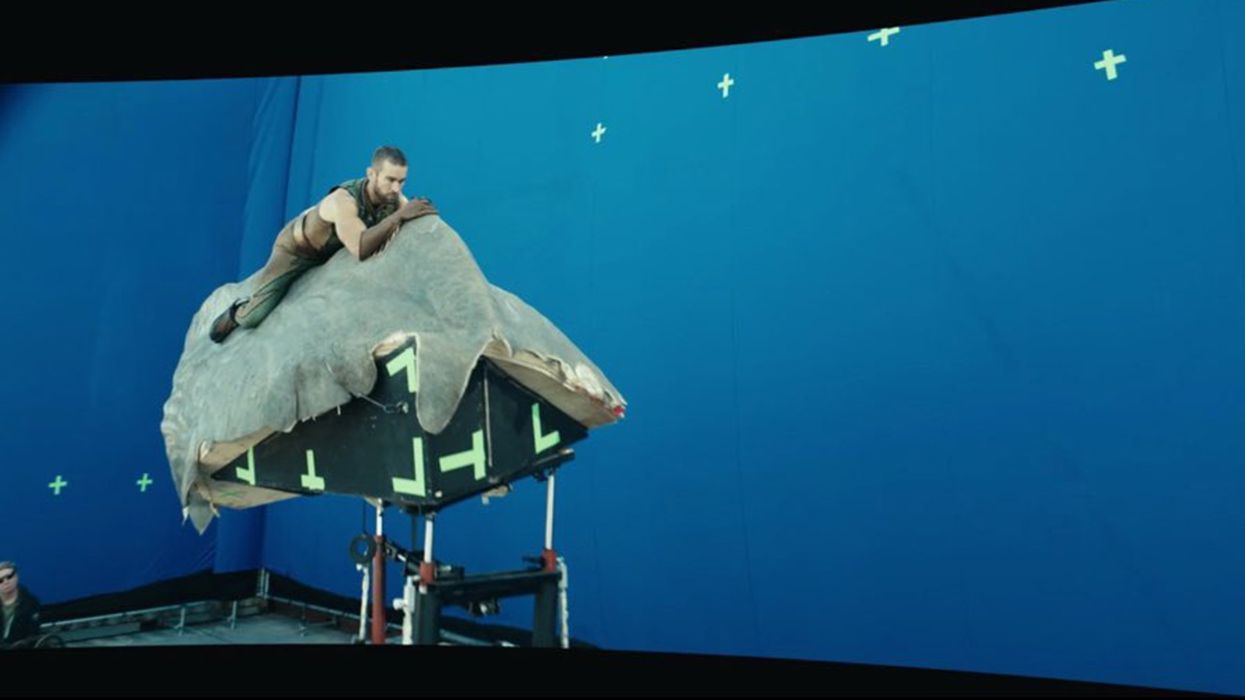
I was lucky enough to catch a live Zoom session that was put together by Visual Effects Society last week. The session included the core effects team of season 2 of Amazon Prime's The Boys, which consists of visual effects supervisor Stephan Fleet, visual effects producer Shalena Oxley-Butler, and special effects coordinator Tony Kenny.
The session covered multiple aspects of the show from an effects perspective, including exploding whales, logistics, and how the various teams collaborate and pull off elaborate effects. It was a very illuminating session with the people in charge of some of the most impressive and convincing visual effects I've seen in episodic television.
If you'd like to watch the full session you can check it out here.
For me, however, there was one section in particular where my ears perked up.
Fleet gave a good breakdown about why he avoids using green or blue screen as much as possible, and also opts for shooting all daytime exterior effects outside and never on a stage. Which is somewhat in contrast to what a lot of viewers might expect. So, how does the team achieve such fantastic compositing and seamless effect work without the use of chroma-keyed elements?
Rotoscoping Versus Green/Blue Screen
Originally, the subject was mentioned in passing while talking about something else, but luckily a viewer asked Fleet to elaborate on the subject. If you'd like to follow along on your own, this portion begins at around 53 minutes here.
"It's something I'm very strict about on this show," he said. "I believe it's because of the look of the show. In terms of the techniques to accomplish not using green screen and blue screen, a lot of it is planning. We're an anamorphic show, at a 2:39 aspect ratio. It helps a lot. Oftentimes, you don't stack characters as much, so if you're doing something like a dirty over, you're over the shoulder, a lot of times the hair doesn't cross over where the visual effects elements are going to be. Rotoscoping a shoulder, I know, is a much easier situation. In an extreme situation where we would have to rotoscope someone's hair, we work with some wonderful companies who have the ability to do that."
According to Fleet, though it can be time-consuming, rotoscoping leads to better, more realistic results, and you can try to cater scenes for that workflow. (Psst. If you want a tutorial on easy rotoscoping, we've got you covered.)
"I am very mindful of putting us into situations where it would like, pardon me for saying it, shit, even if we rotoscoped it," he said. "It's all about the lighting. Here's the thing with TV production, you don't have a lot of time when you're on set, and we're a very ambitious show that's trying to pull off a lot of crazy gags in a very short amount of time. If I say we need to do a green screen situation, it's instantly going to slow down production.
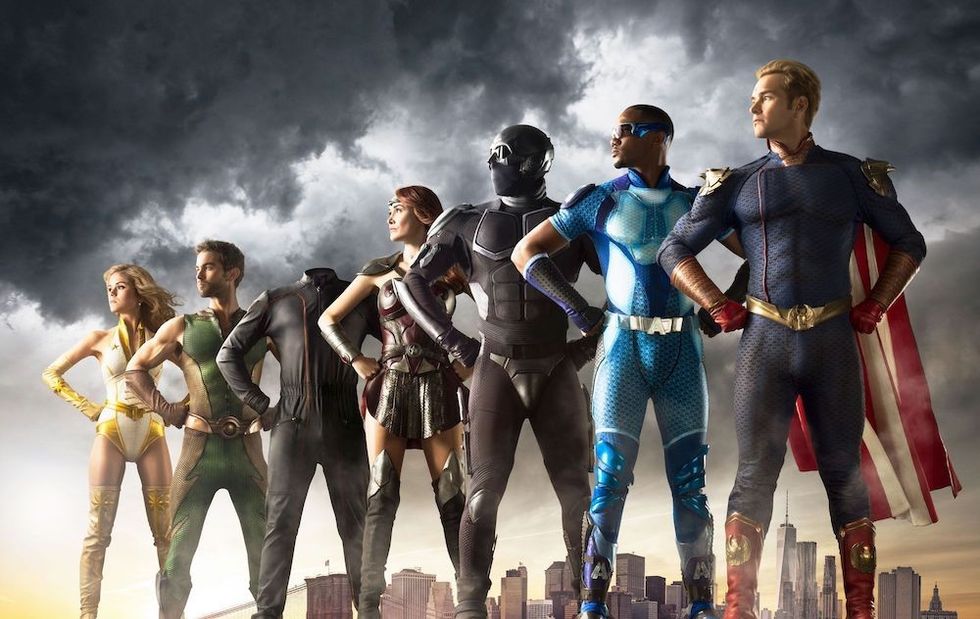
These are the types of decisions that you don't have the time to think about as much when you're a lower-budget production.
An hour or so of setting up a really well-placed green or blue screen can cost way more with all of the headcount waiting around versus paying a team of a couple people to just take the time rotoscoping. The team also mentions that rotoscoping, when done right, just tends to look better.
"If you're in a small space, and you're gonna pop up a green screen for a reason, it can affect the lighting negatively," he said. "You get spill, you block backlight, it's always more valuable to me to keep the lighting from the mid, foreground, and background, the same. Also for what it's worth, one of our lead actors is in blue, the other's in green. Makes it very tricky."
It also affects the perceived realism and lighting of the scene in some intangible ways.
"Your brain knows what looks real and what doesn't," said Shalena Oxley-Butler (visual effects producer for season 2).
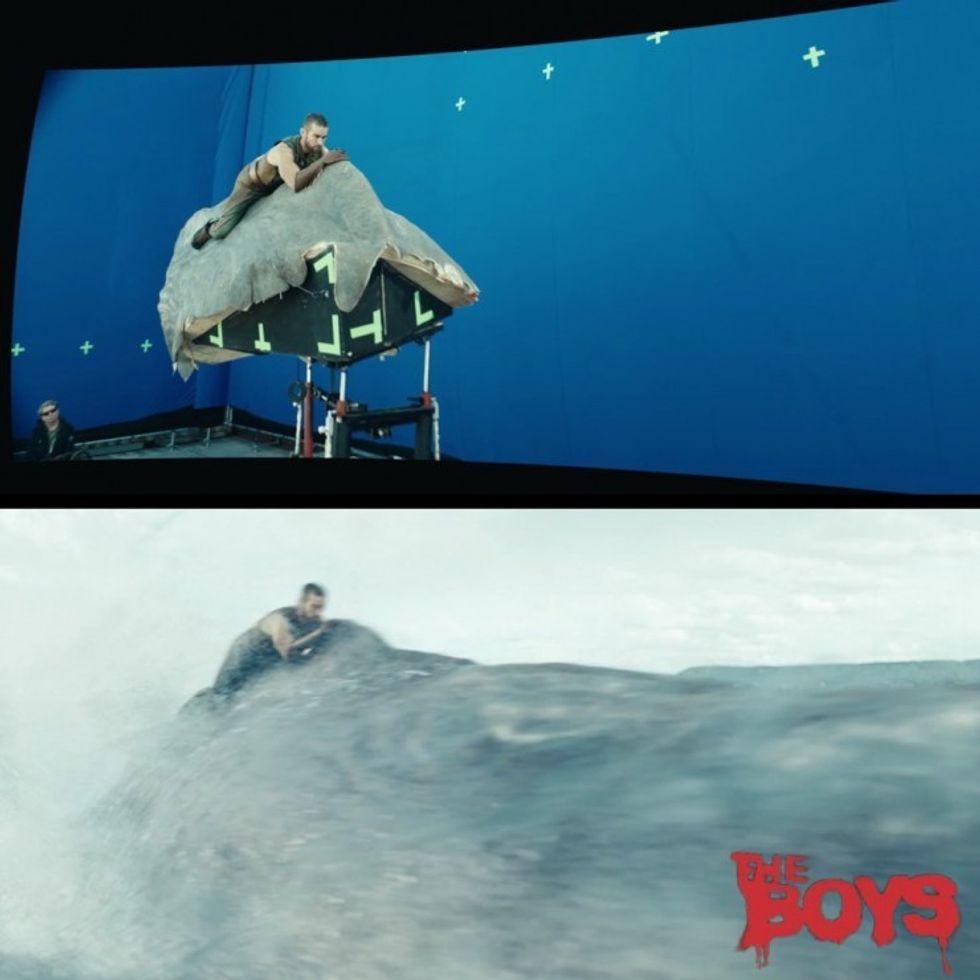
Avoiding Shooting Plates in Studio Lighting
Another interesting application of this concept is the idea of shooting any sort of exterior VFX scene in the actual light from that scene, instead of trying to recreate it in studio.
Fleet said, "The thing I dislike the most is if you're going to try and shoot some sort of daylight exterior in an interior stage on a green or blue screen, it just always looks studio lit to me. The sun is a really powerful light source that bounces out a whole bunch of global illumination around the world. It's really hard to recreate that on a stage. That deep [character in the show] shot of him on the whale, we shot that another day, but it was one hundred foot of coved blue screen outdoors during the daylight. Going back to season one with Queen Maeve [also a character in the show] exiting the plane as it's crashing was shot outside. If it's a daylight exterior that we have to shoot some green element for, I'm going to say we have to shoot it outside."
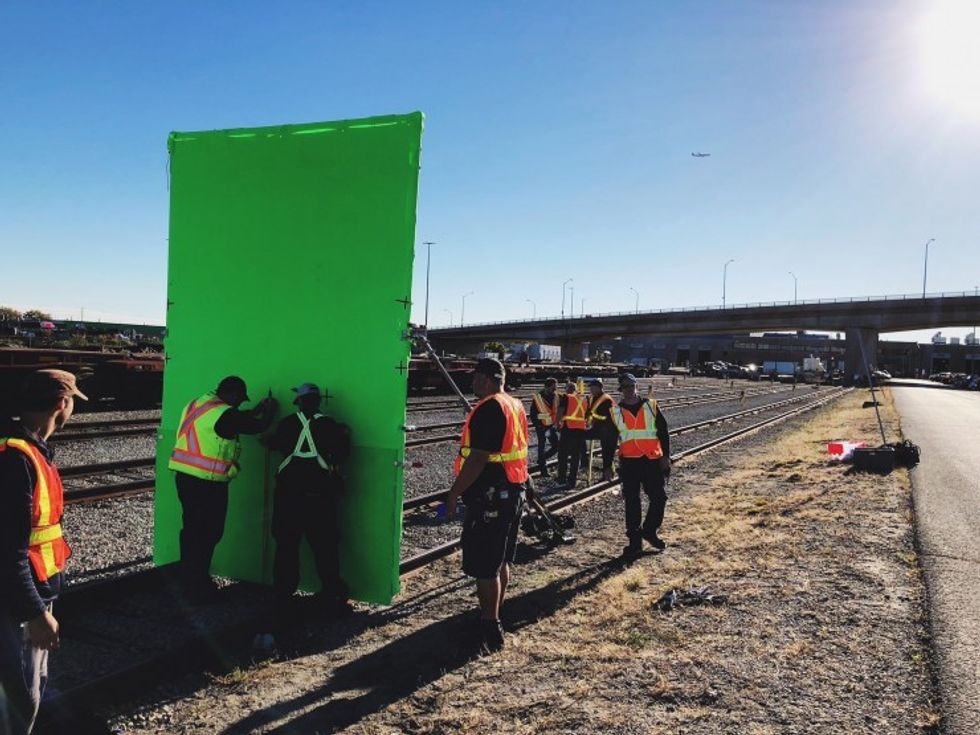
This is a huge part of why the show looks so good to me. I can't stand the look of effects that just feel like completely studio-lit scenes. It's so easy for that sense of realism to break down the second an actor has a slight bit too much rim-light or some strangely colored source bouncing onto their face.
"It comes down to experience," Fleet said. "I'll just look at a shot with the director on the day, do a replay or something, and I'll say, 'Oh, I think we can roto that or let's not go with green screen here.' I'll make these decisions sometimes very last-minute."
